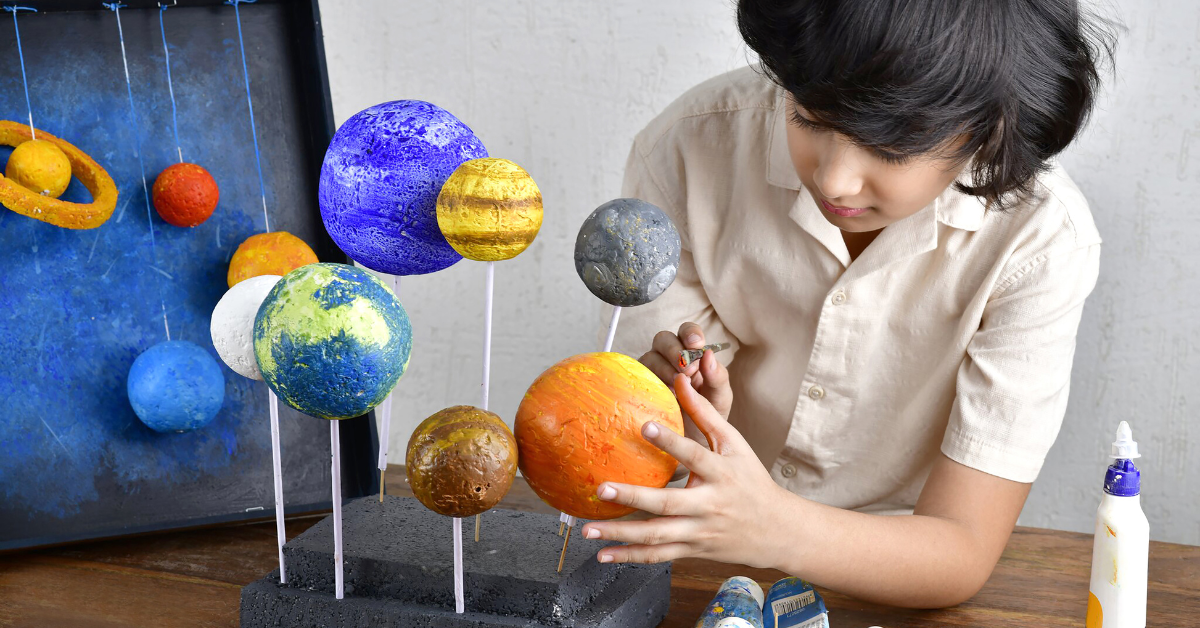Homeschooling offers a unique opportunity to design flexible, interest-led learning experiences for your child. One of the most effective and engaging teaching strategies is the use of cross-subject unit studies. By integrating multiple subjects around a single theme, you encourage a deeper understanding of concepts, highlight the interconnectedness of knowledge, and make lessons fun and memorable.
Cross-subject unit studies align with how children naturally learn. Just as real-life scenarios involve blending various skills and knowledge areas—cooking dinner, for instance, might require math, science, history, and communication—unit studies mirror this complexity, creating holistic education experiences.
This guide explains how to plan and implement unit studies successfully in your homeschool.
The Power Of Cross-Subject Unit Studies
Cross-subject unit studies help children see how different subjects build on and complement one another. For example, a unit study on “Rainforests” might cover geography (studying rainforest locations), science (understanding ecosystems and biodiversity), art (drawing rainforest habitats), and language arts (writing a fictional story set in a rainforest). When students learn this way, subjects feel less like isolated boxes and more like pieces of a larger puzzle.
This strategy offers numerous benefits:
- Enhanced Engagement: Connecting subjects around a central theme sparks curiosity and motivation.
- Stronger Knowledge Retention: Interrelating ideas helps students remember what they’ve learned over the long term.
- Efficient Learning: By covering multiple subjects at once, you save time and streamline your planning process.
- Real-World Skills Development: Your child learns to apply knowledge holistically, simulating how problem-solving works in daily life.
Now, let’s explore how to put this practical and enriching method into action.

A Practical Guide To Designing A Cross-Subject Unit Study
Creating an effective unit study may feel daunting at first, but a clear process makes it manageable. Here’s a step-by-step system to set you on the right track.
- Choose a Central Theme
Start by selecting a topic that grabs your child’s interest and offers opportunities for cross-subject exploration. Good themes are broad enough to incorporate a variety of disciplines. For example:
- “Ocean Life” invites study in science (marine biology), geography (ocean currents), art (illustrating sea creatures), and language arts (reading descriptive texts).
- The Middle Ages” spans social studies (medieval history), art (calligraphy or stained glass), science (armor design), and language arts (reading medieval legends).
Key questions to guide your choice:
- What topics spark my child’s interest?
- Does this subject lend itself to exploration across multiple disciplines?
- Are resources readily available to support learning?
- Outline Relevant Subjects
Once you’ve pinpointed a theme, list the subjects you want to weave into your unit study. While not all themes include every subject, try to touch on core areas, including:
- Language Arts (reading, writing, vocabulary, and discussion)
- Math (measuring, analyzing data, or solving real-world problems)
- Science (conducting experiments or exploring scientific concepts)
- Social Studies (cultural, historical, or geographical aspects)
- Art and Music (creating crafts, paintings, or studying relevant compositions)
For example, if the chosen theme is “The Solar System,” you might cover:
- Language Arts: Writing a creative story from the perspective of a pioneer on Mars.
- Math: Calculating the distances between planets.
- Science: Exploring gravity and the moon’s phases.
- Social Studies: Learning about the history of space exploration.
- Art: Crafting a model of the solar system.
- Gather Resources
Research and gather all the materials you’ll need. Your collection might include:
- Books (fiction and nonfiction)
- Online videos and documentaries
- Worksheets or guides for hands-on activities
- Art supplies or science kits for creative projects
Public libraries, homeschooling websites, and educational YouTube channels are excellent starting points. For cost-effective options, look for free printables, museum exhibits, or borrow materials from fellow homeschoolers.
- Plan Your Schedule
Design a weekly or monthly schedule that divides the theme into manageable chunks. Here’s an example of how your week might look for a unit study on “Rainforests”:
- Monday – Language Arts (reading an article about rainforests and writing a summary)
- Tuesday – Science (learning about rainforest layers and the water cycle)
- Wednesday – Geography (mapping out rainforests on a world map)
- Thursday – Art (making a collage of rainforest animals)
- Friday – Field Trip (visiting a botanical garden or watching a virtual rainforest tour)
Adjust based on your child’s energy levels and interest. You might dedicate more time to math or art if they particularly enjoy those subjects, or pare back on areas that feel less engaging.
- Incorporate Real-Life Applications
To make lessons more meaningful, tie them to real-world experiences:
- Plan field trips, like visiting a museum for a history-themed unit or stargazing for an astronomy focus.
- Cook a dish inspired by the culture you’re studying, combining math (measuring ingredients) with social studies and sensory learning.
- Build a project, such as creating a model or assembling a scrapbook that wraps up the unit.
This combination of real-life engagement and theoretical study makes learning more interactive and relevant.
Fine-Tuning Your Unit Studies for Success
While planning lays the groundwork, execution is where the magic happens. The following strategies help ensure your unit study meets your child’s individual needs and learning style.
Encourage Independent Learning
Older children often enjoy the autonomy of independent tasks. Try:
- Assigning them to research part of the topic and share findings with the family.
- Encouraging them to propose project ideas, like designing an infographic or writing an opinion piece.
- Having them lead a younger sibling through a hands-on activity.
Foster a Blend of Solo and Group Activities
Some activities, such as reading or writing, are better suited to solo work. Others thrive on collaboration. For example:
- Work together as a family to construct a diorama or complete an experiment.
- Hold a family debate or discussion for units involving civics or history topics.
This balance nurtures both independent critical thinking and teamwork skills.
Hands-On Assessments
Formal tests aren’t a natural fit for every student or family. Instead, measure your child’s understanding through creative projects:
- Crafting an illustrated book about the topic.
- Designing and presenting a poster.
- Conducting a mock interview or presentation.
Choose methods that align with your child’s learning style while showcasing their new knowledge.
Prioritize Flexibility
Plans often change—especially in homeschooling. Your child may be so fascinated by a particular topic (e.g., rainforest frogs) that you expand that section or, conversely, rush through material they find dull. Adjust timelines and lessons as needed to maintain momentum and interest.
Inspiring Cross-Subject Unit Study Ideas
Here are more rich themes and integration ideas for unit studies:
- Ancient Egypt
- Language Arts: Read myths and legends, then write a diary entry from the perspective of an Egyptian farmer.
- Math: Calculate the dimensions of a pyramid based on a scale model.
- Science: Study mummification and conduct a salt-preservation experiment.
- Social Studies: Explore Egypt’s trade routes and cultural exchanges.
- Art: Sketch hieroglyphics or paint murals inspired by tomb carvings.
- Ecosystems
- Language Arts: Write persuasive essays on environmental conservation.
- Science: Conduct a water filtration experiment.
- Math: Graph climate data and draw statistical comparisons.
- Social Studies: Research indigenous groups living in different biomes.
- Art: Create visual representations of ecosystem food chains.
- World War II
- Language Arts: Analyze speeches or letters written during the war. Rewrite one from an alternate perspective.
- Math: Chart military logistics and supplies using real data from battles.
- Science: Study advancements in technology like radar systems.
- Social Studies: Create a timeline showcasing key events.
- Art: Recreate wartime propaganda posters as a family project.
These themes offer a snapshot of what’s possible. Tailoring unit studies based on your child’s interests will naturally make them even more compelling.
Crafting the Best Education Through Unit Studies
Cross-subject unit studies not only bring subjects to life but also empower you to build a curriculum uniquely suited for your child. Whether they thrive in hands-on experiments, appreciate in-depth discussions, or love crafting intricate art projects, unit studies provide the versatility to meet their needs—and fuel their curiosity.
By weaving knowledge seamlessly through a single theme, you’re showing your child how interconnected the world truly is. With practice, planning, and some trial and error, unit studies will quickly become a valuable framework for your homeschooling venture.





